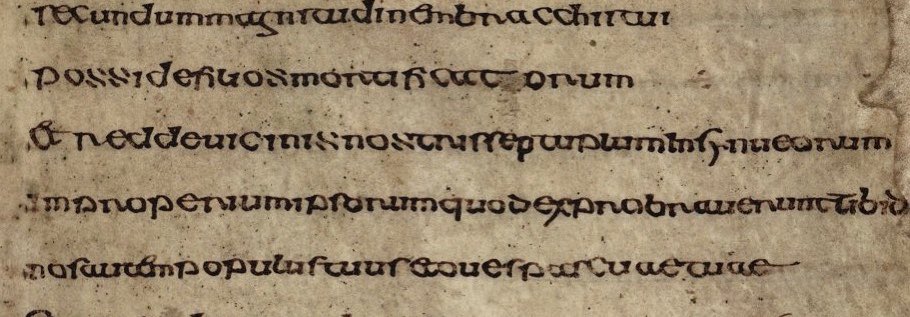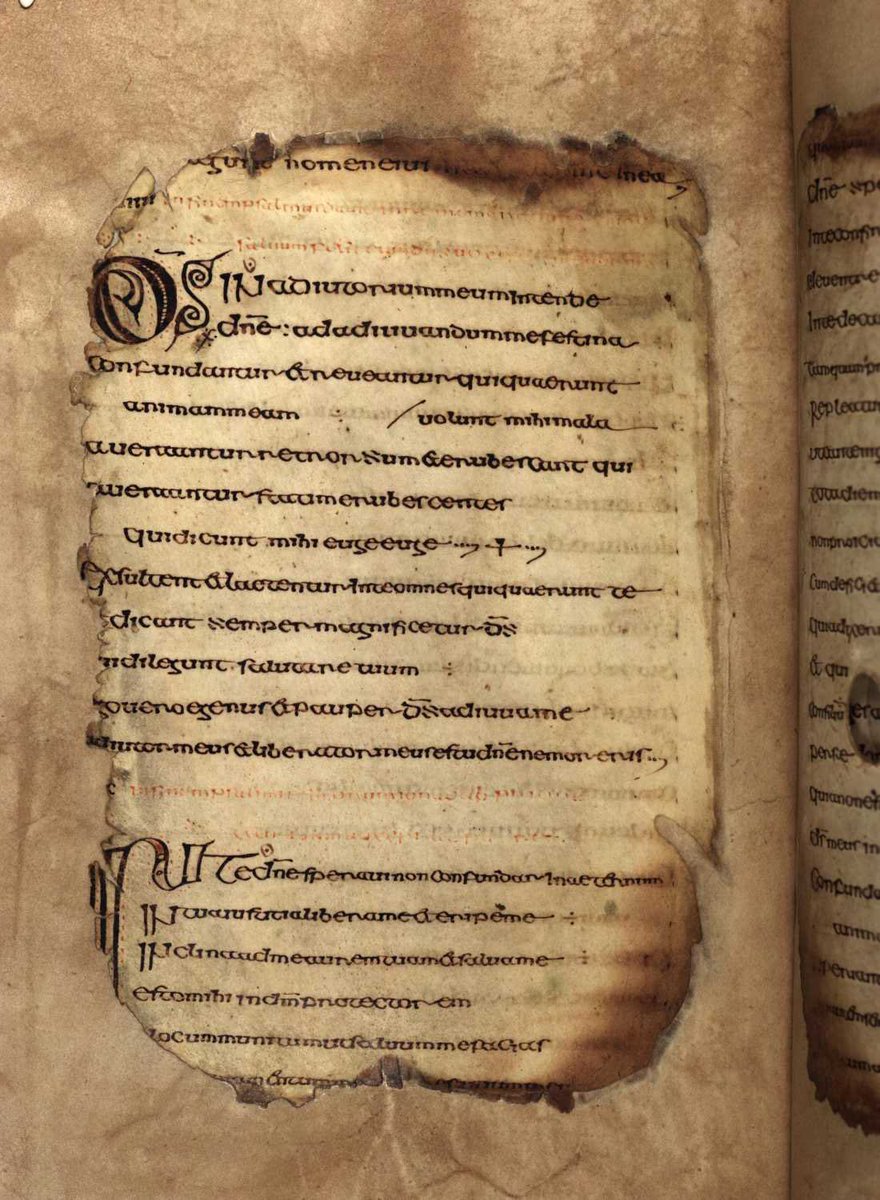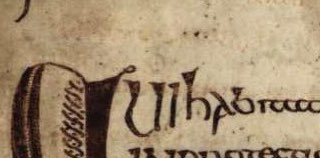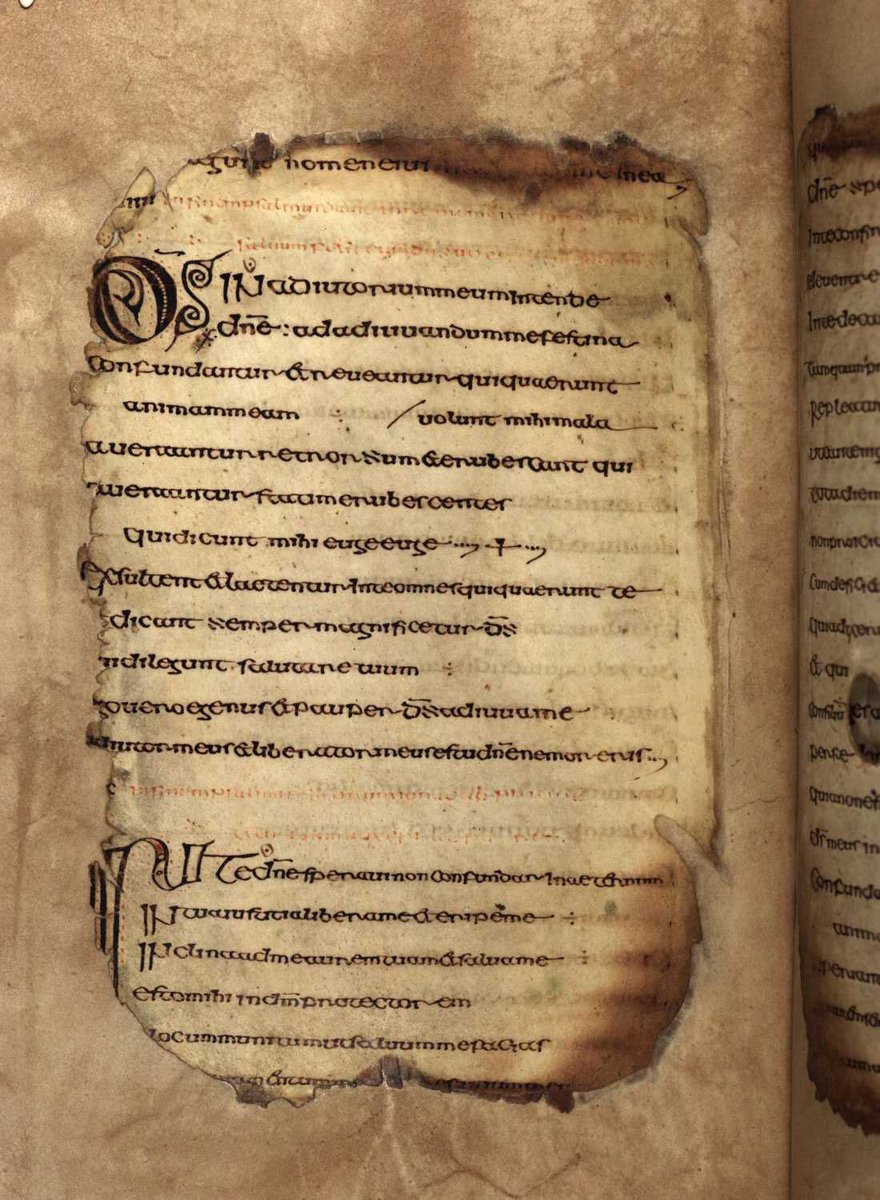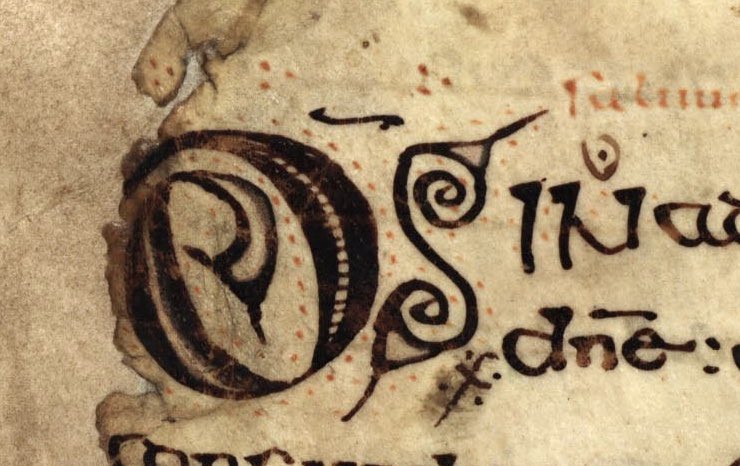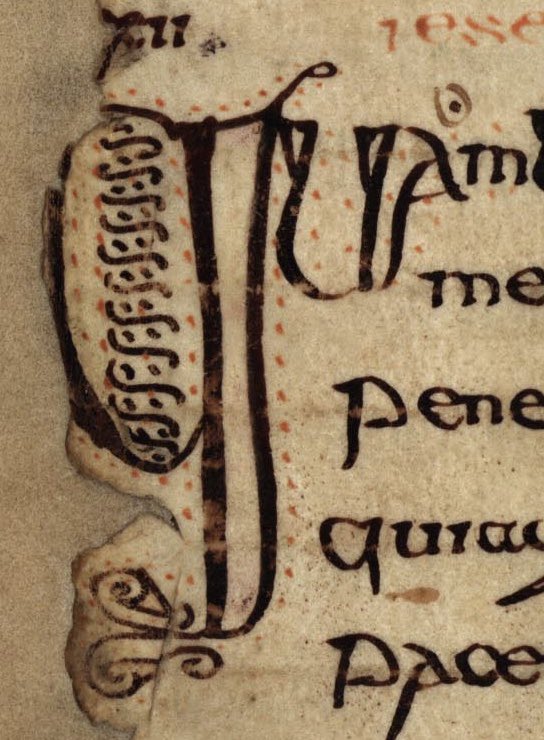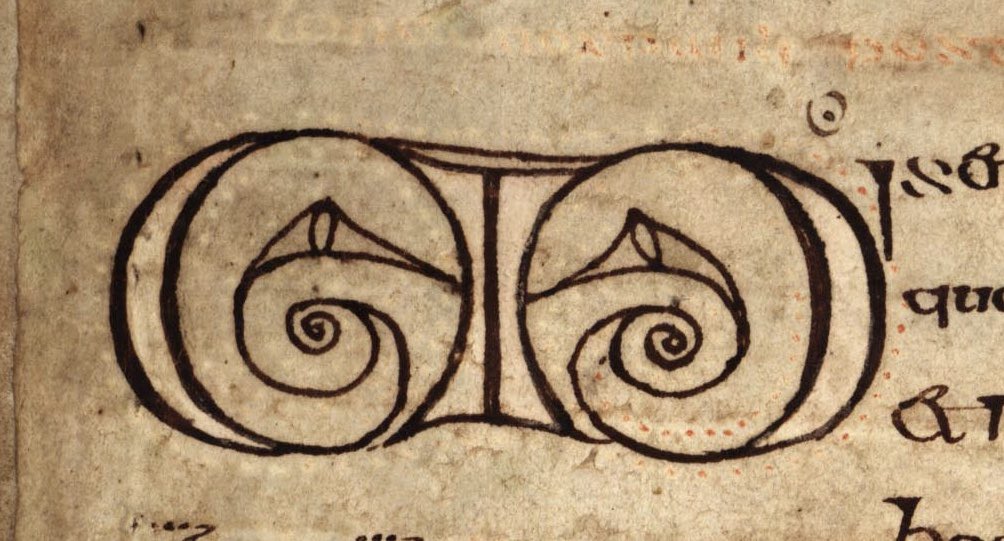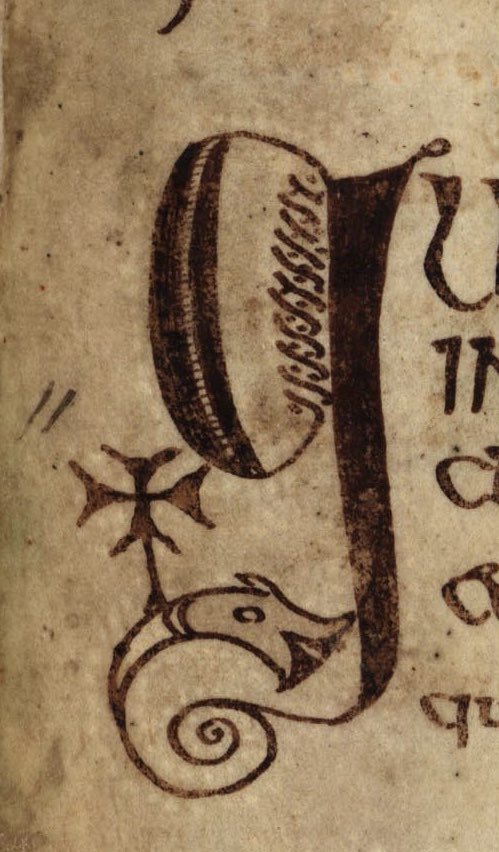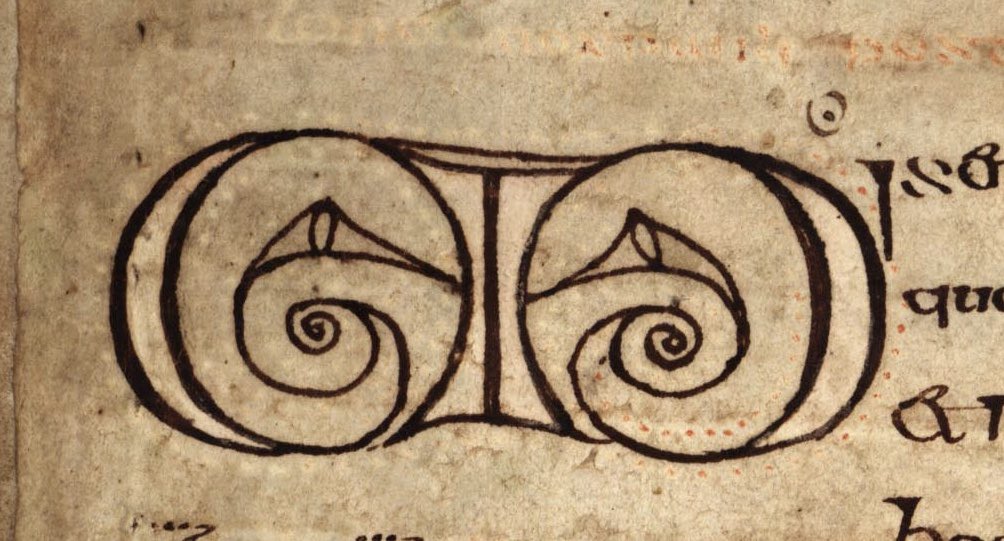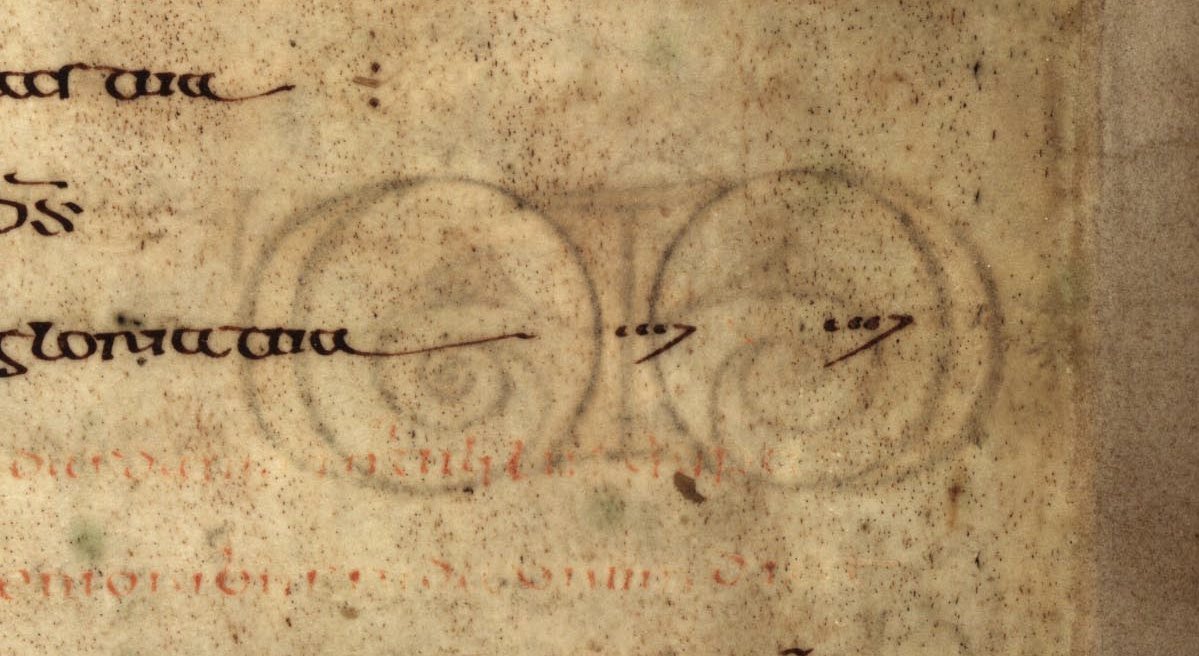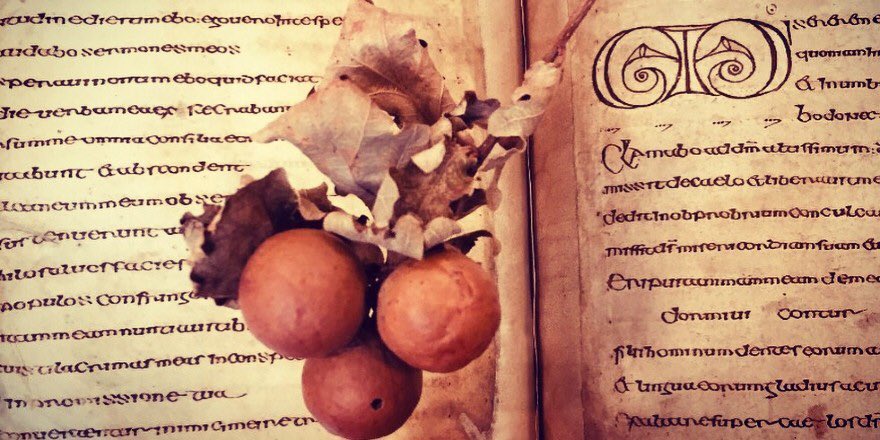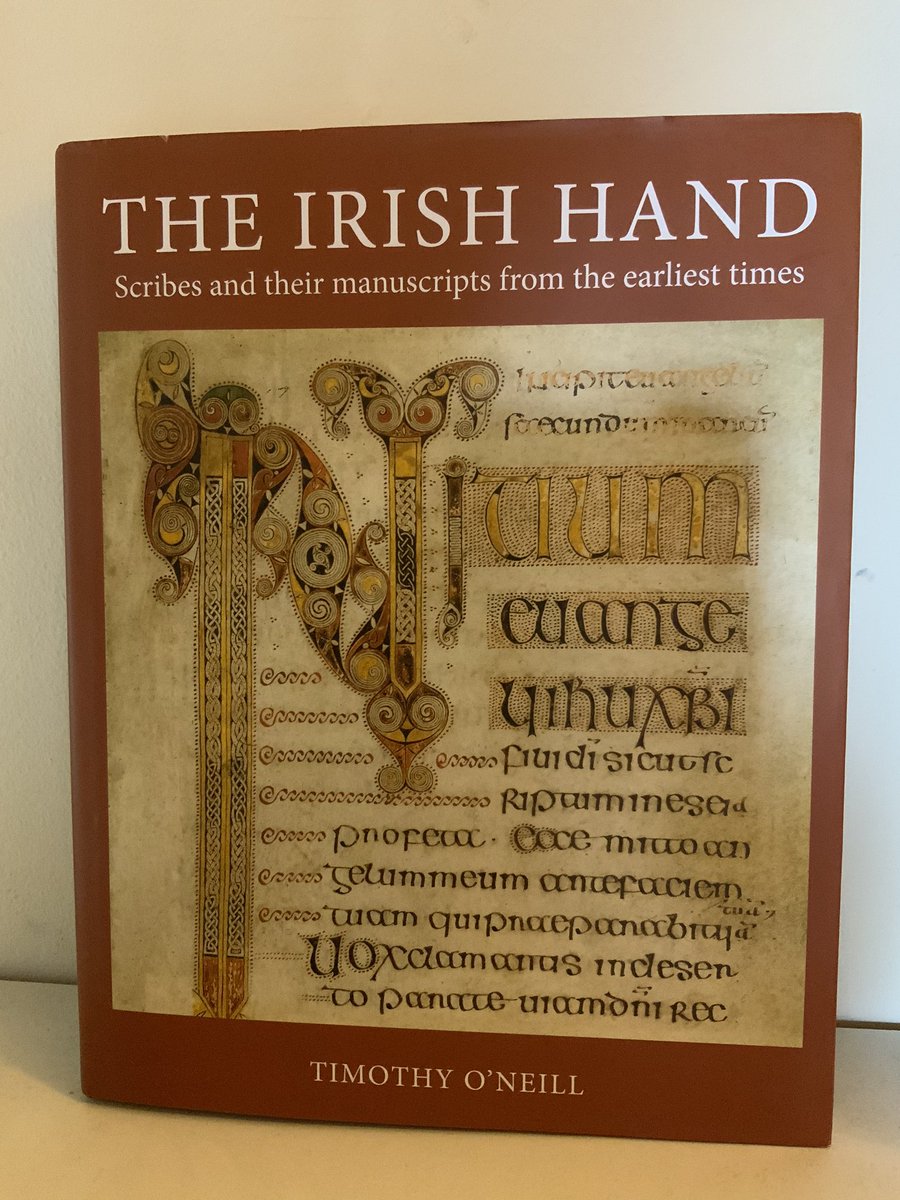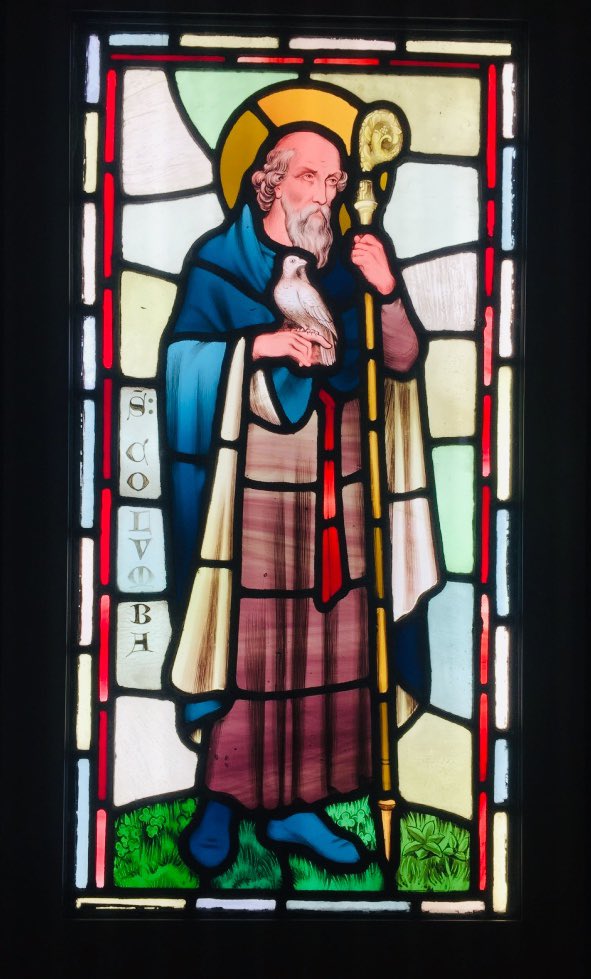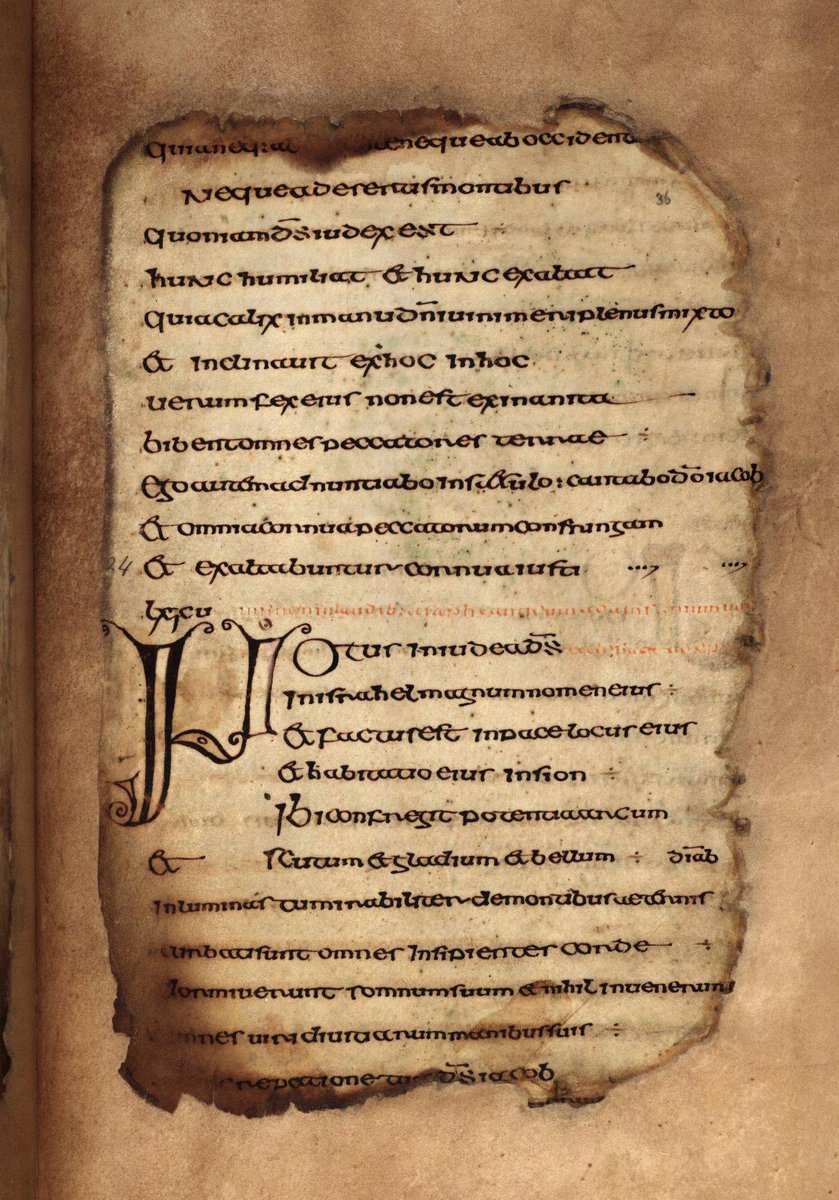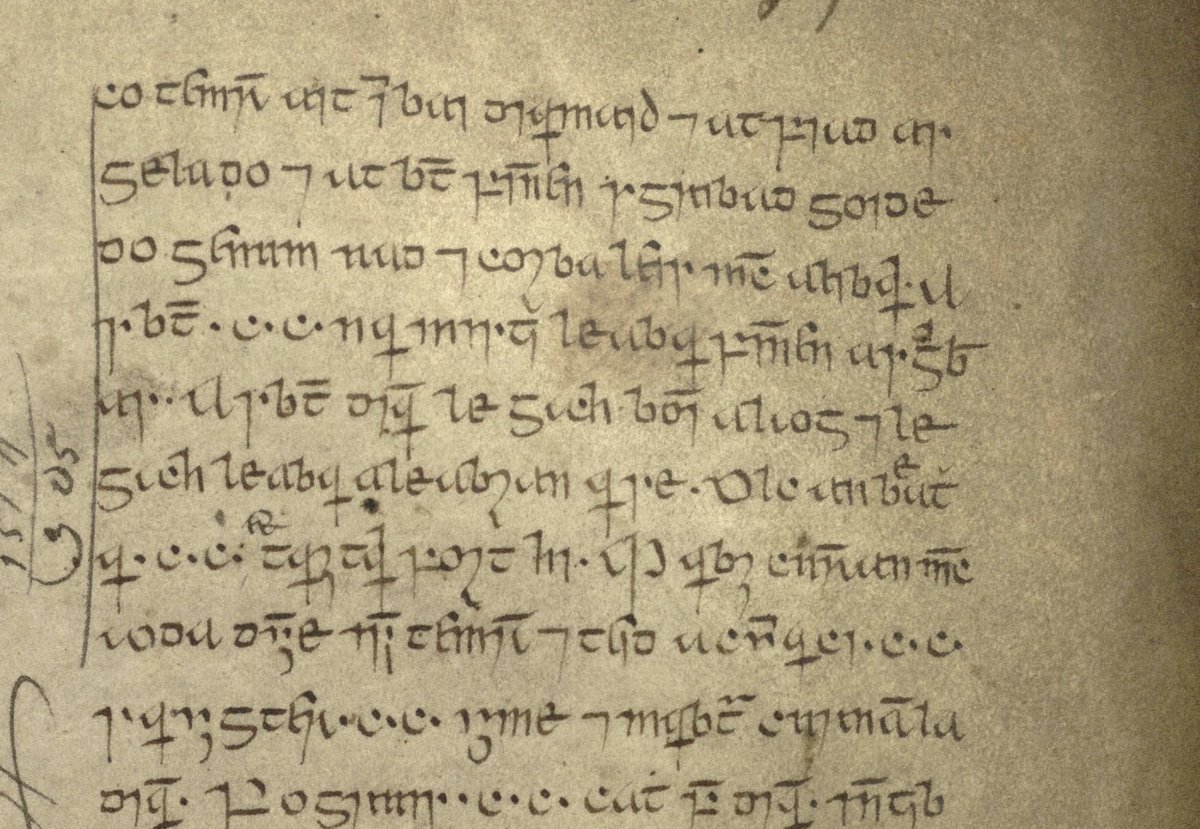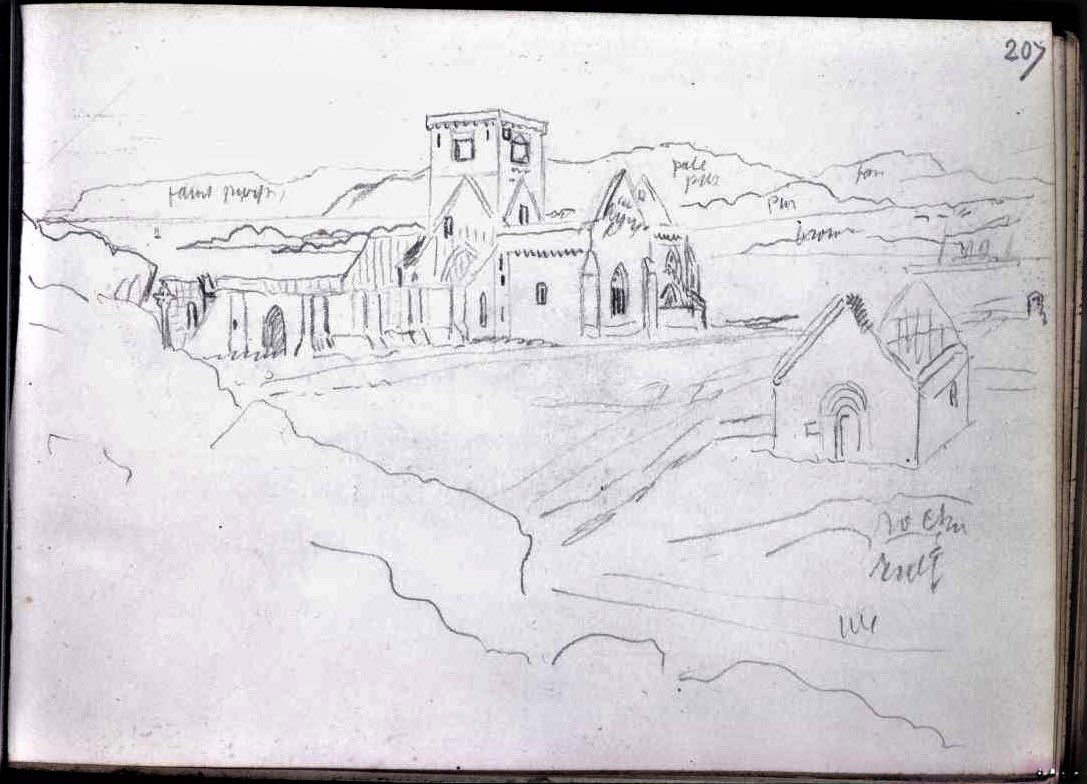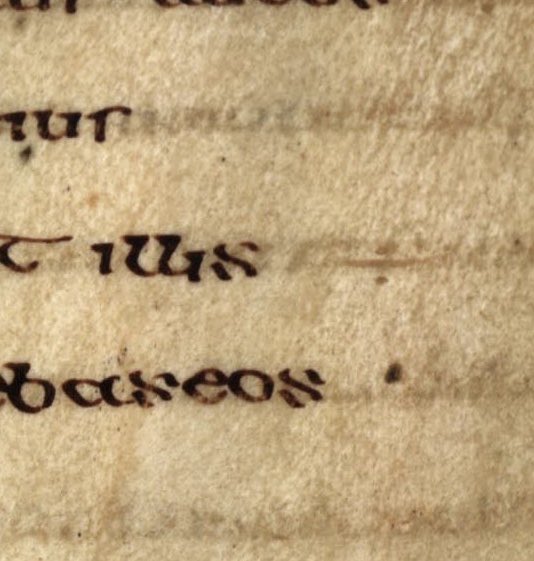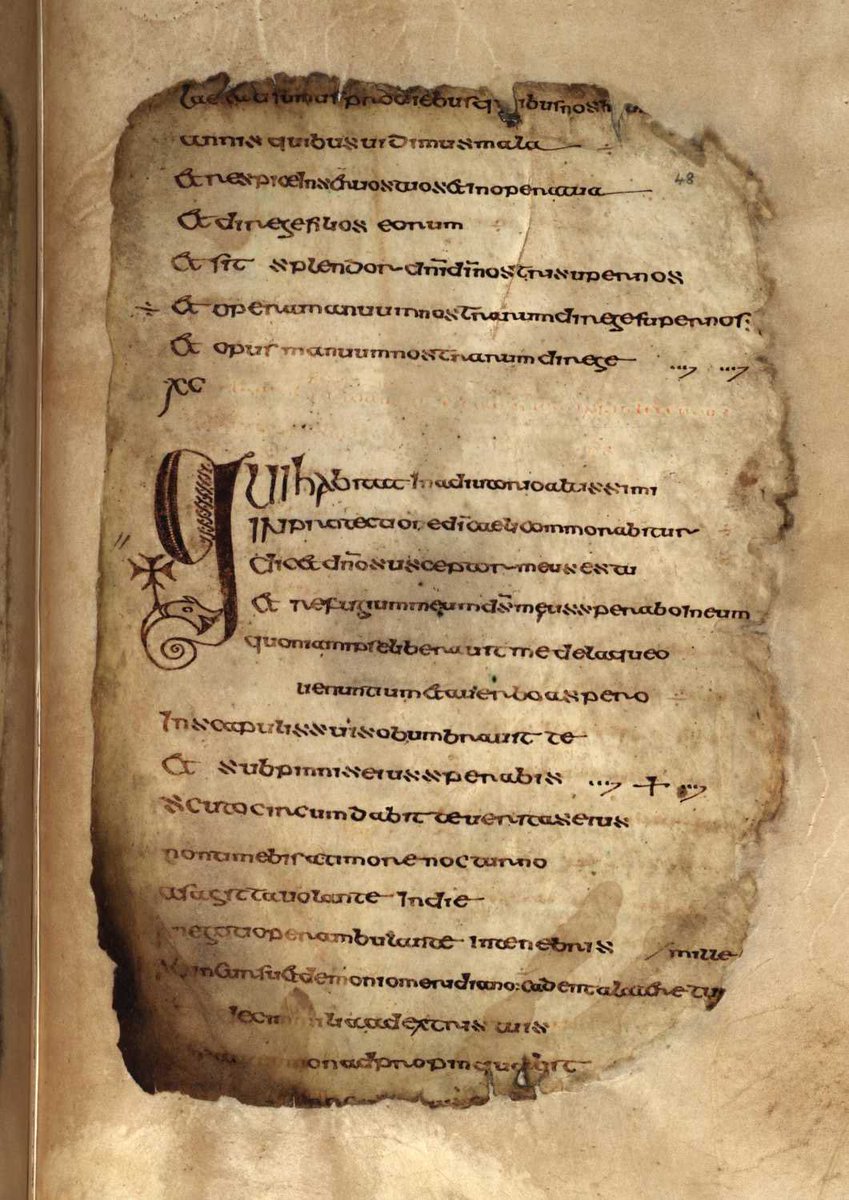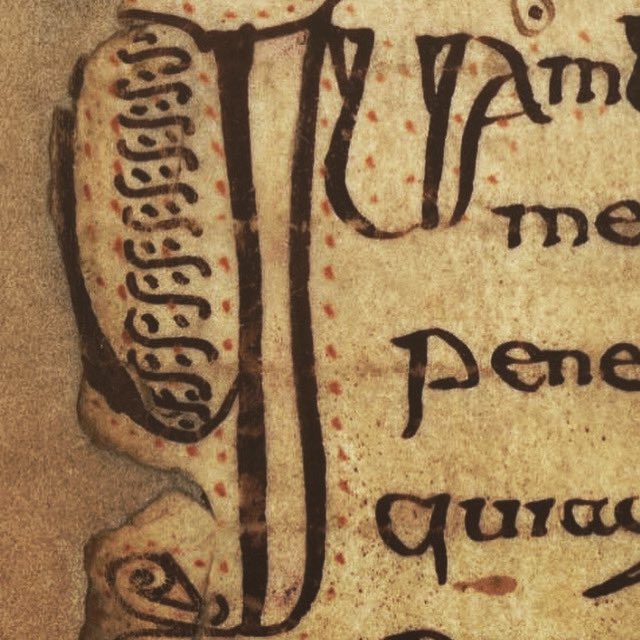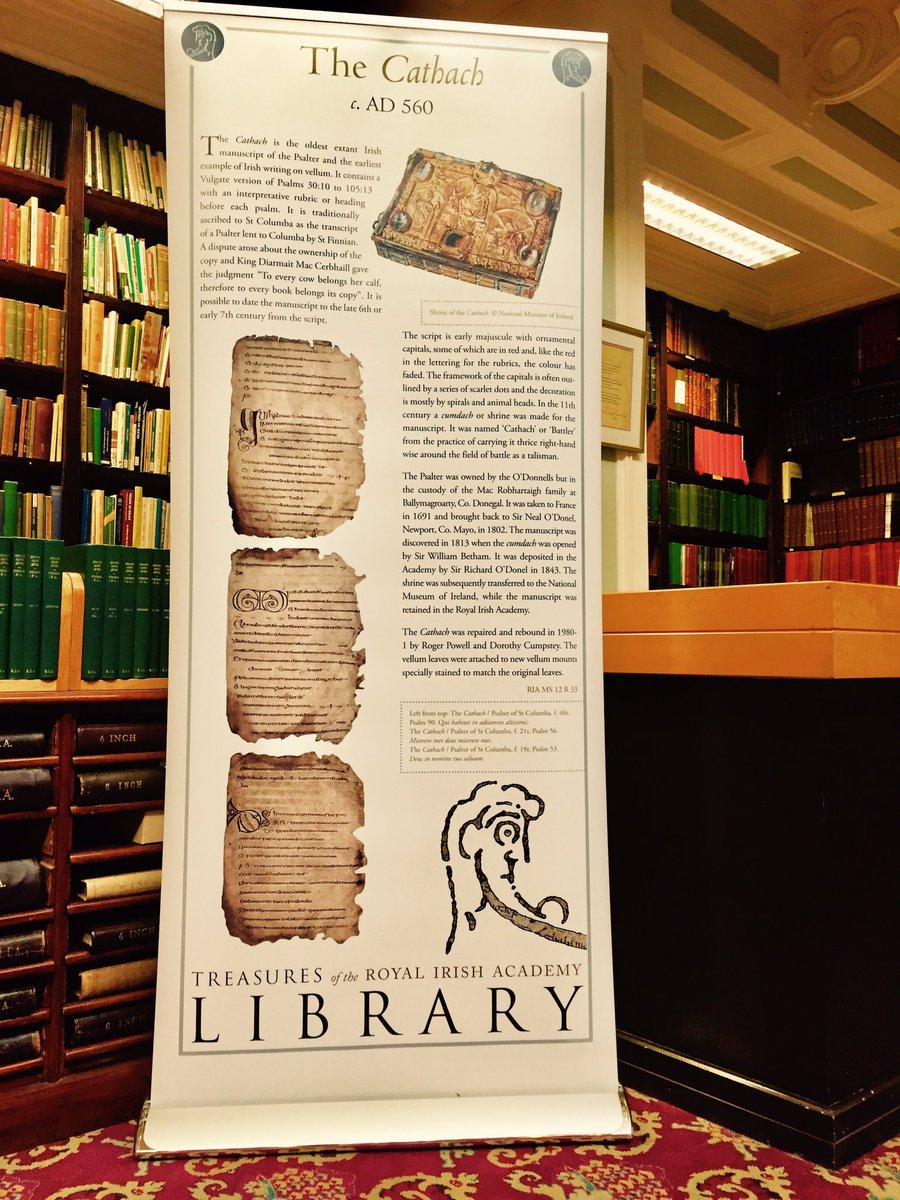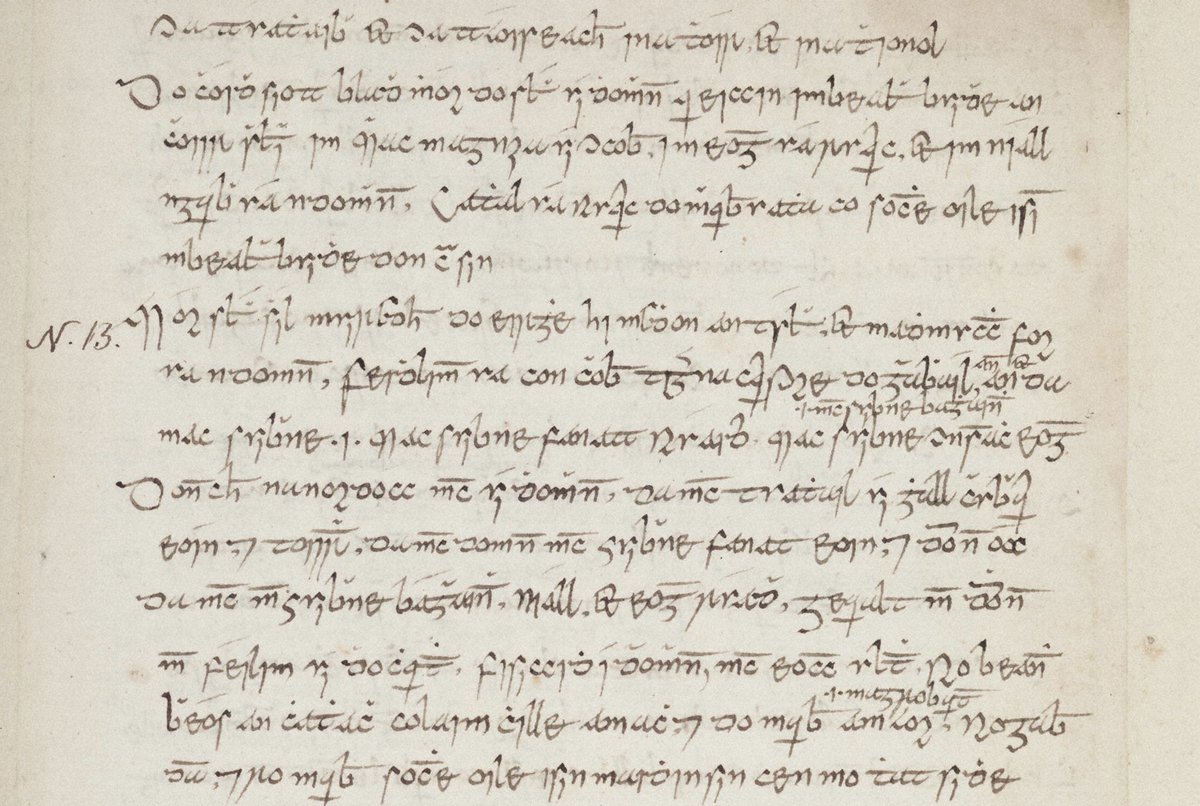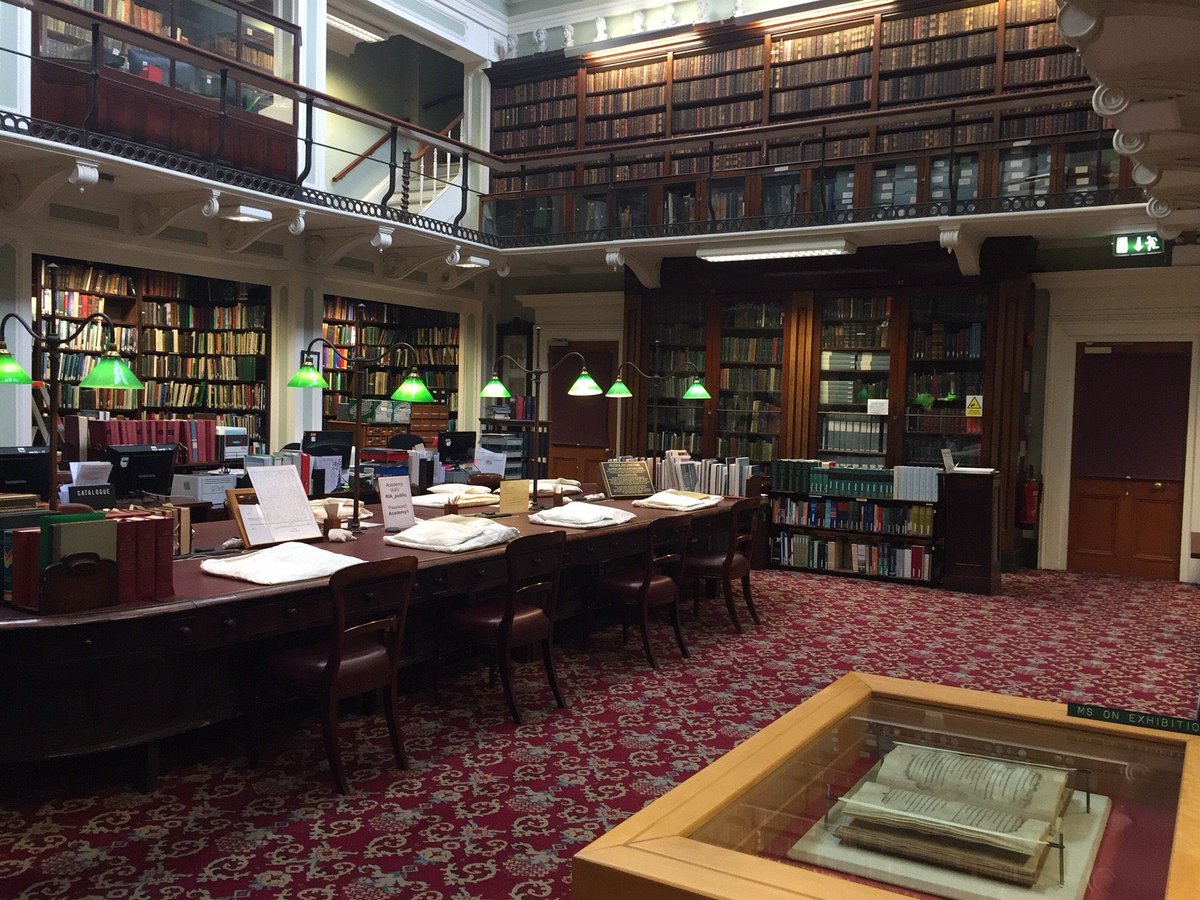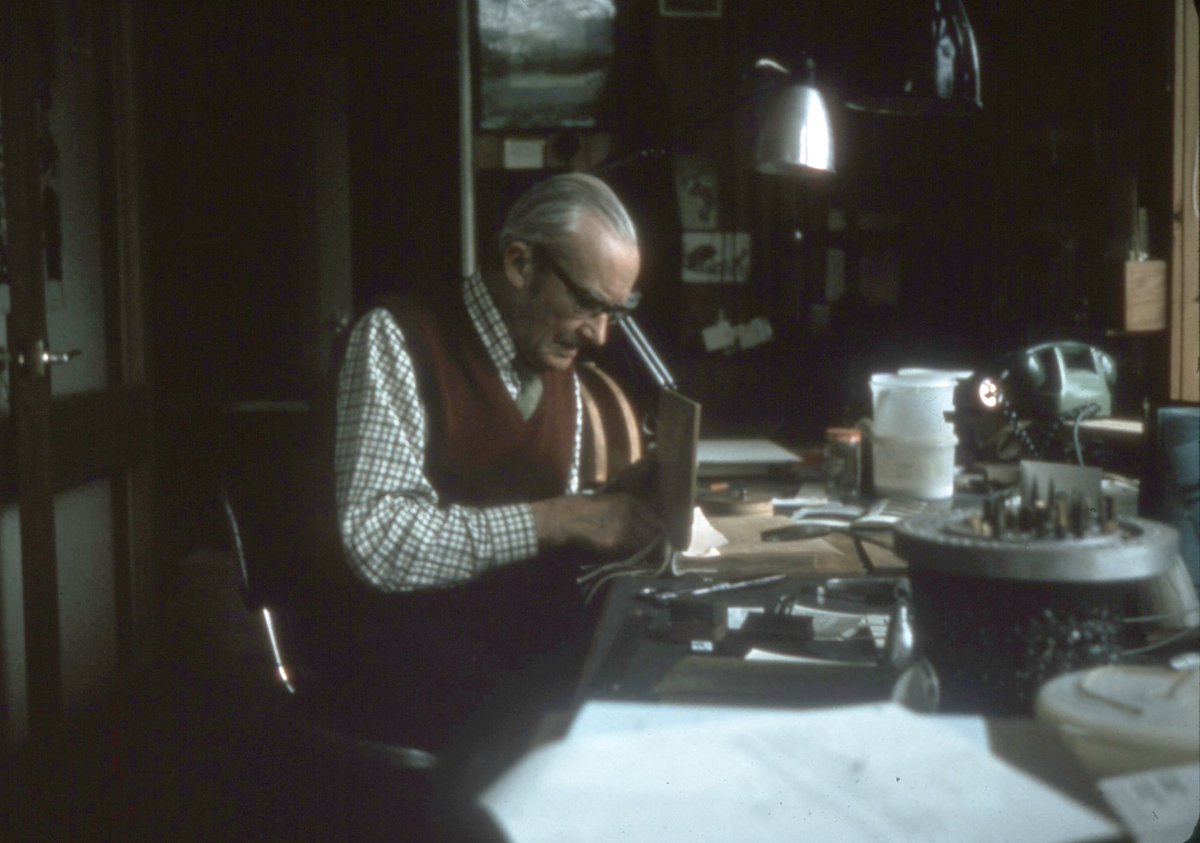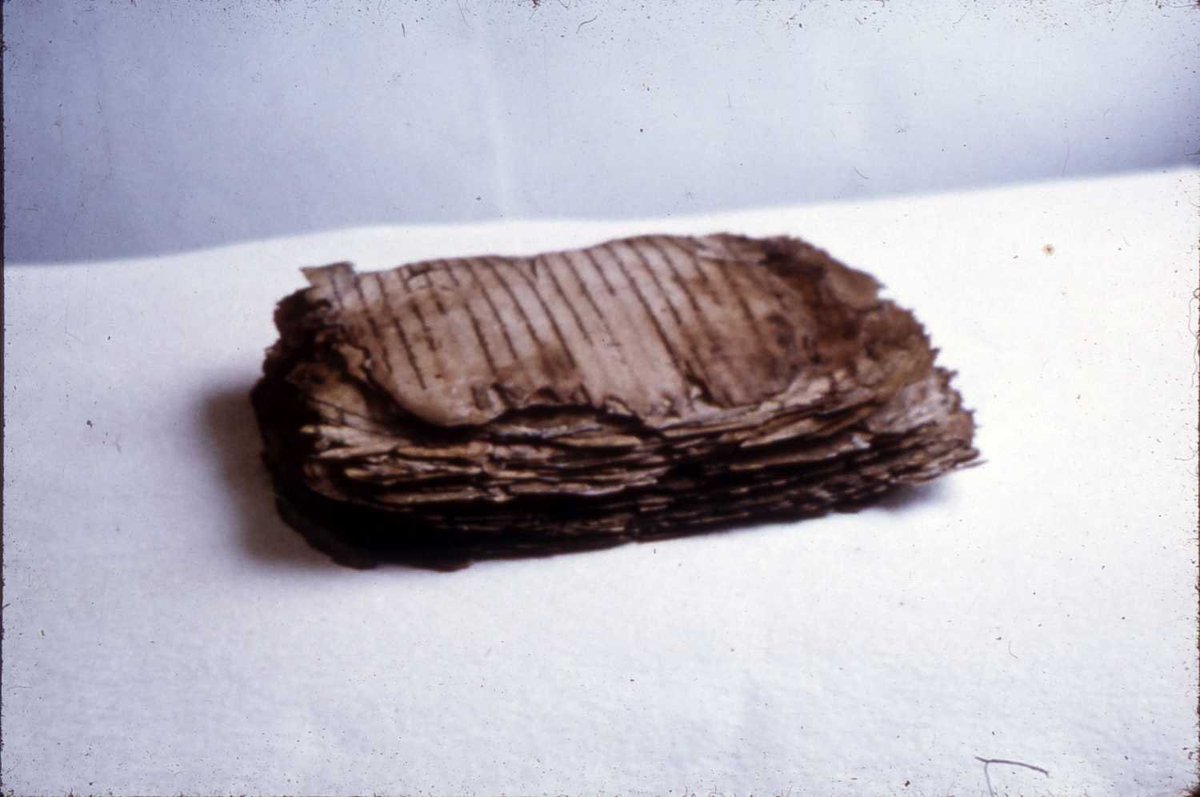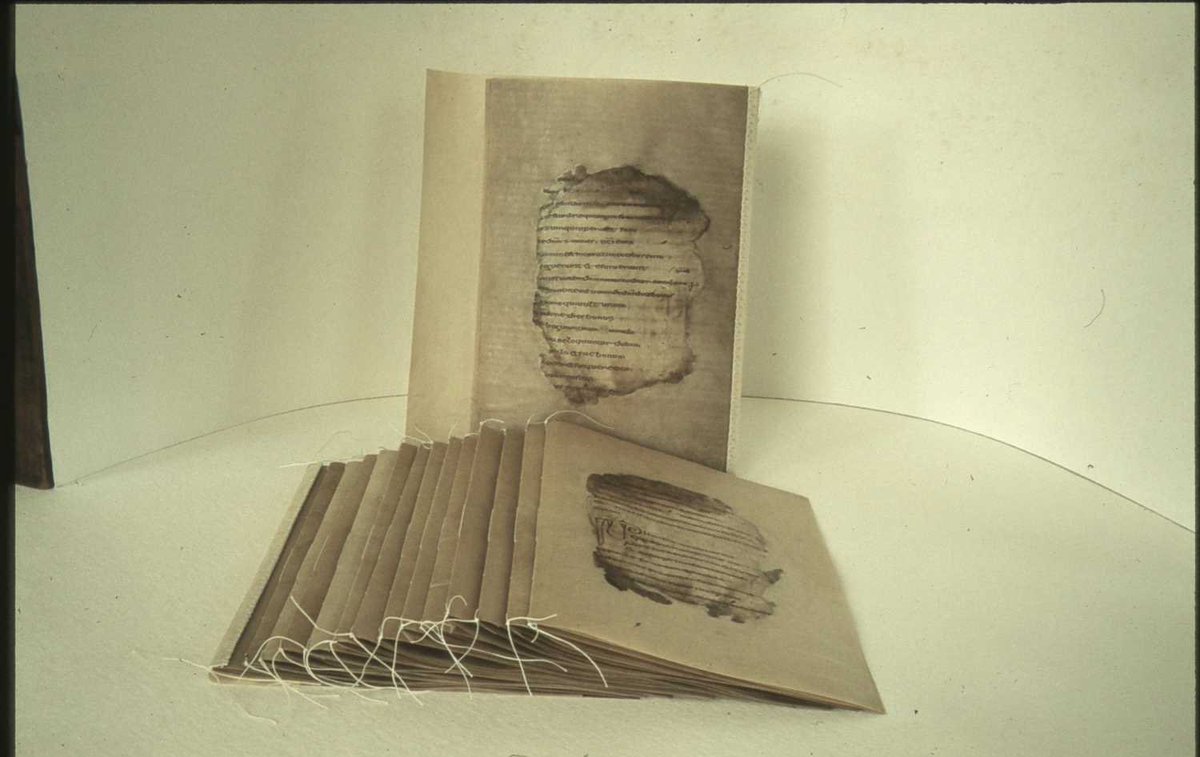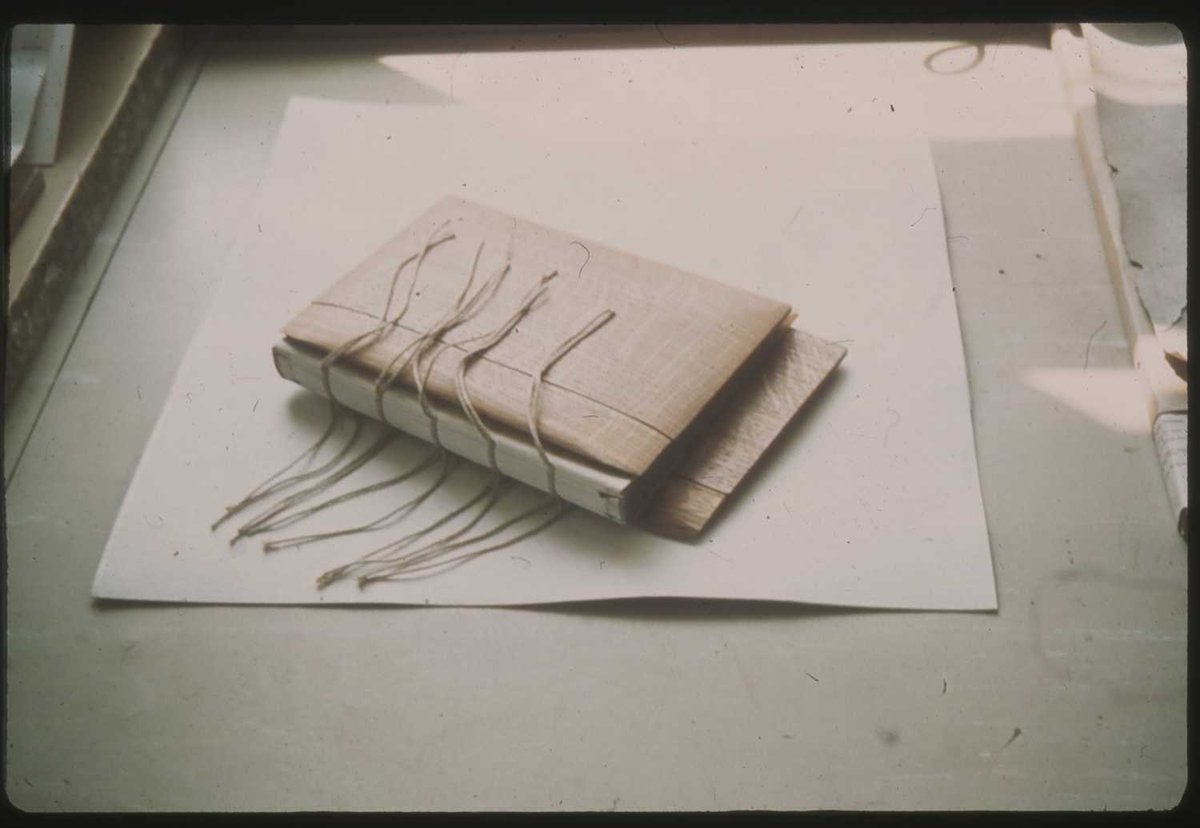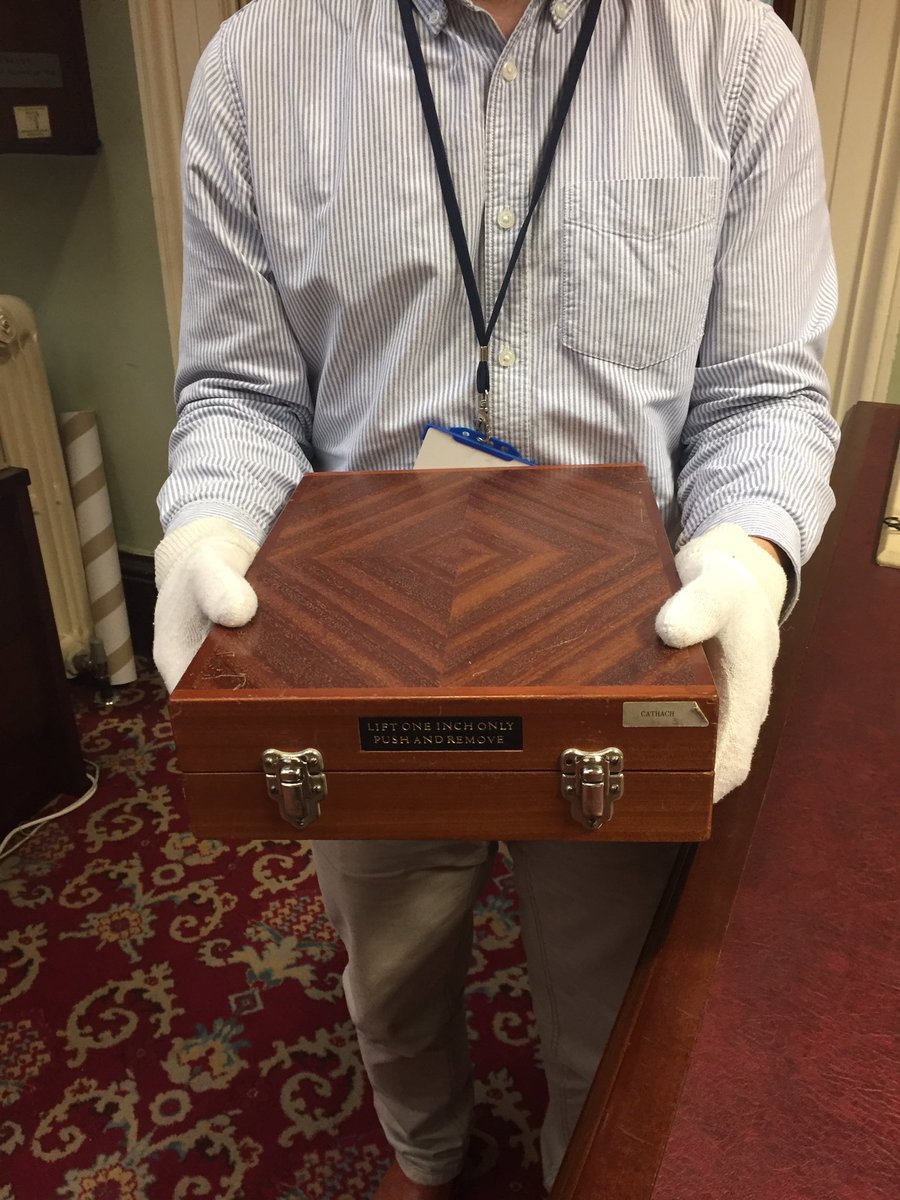This week we’ll look at the Library’s oldest manuscript : The Cathach #Cathach
Written in Latin. The Cathach is the oldest extant Irish manuscript of the Psalter and the earliest example of Irish writing. Today we’ll look at the script.
The manuscript would have originally had c.110 leaves, 58 survive. It contains a Vulgate version of Psalms XXX (10) to CV (13). The psalms are arranged on the page ‘per cola et commata’ (by phrases and clauses). This makes the text easier to read or chant aloud.
The script is book-hand, with round letters with bold wedge serifs on the upright strokes - ascender. The wedge serif was not known in Roman or western calligraphy, it is first seen in the Cathach.
In 1972, palaeographer E. A. Lowe, described the script as ‘the pure milk of Irish calligraphy’. (Codices Latini antiquiores II) The manuscript is quite plain but for the ornamented initial and rubric at the beginning of each Psalm. Folio 30v contains Psalms 69 and 70.
A rubric is a piece of text, traditionally written in red, for emphasis. Used for headings, titles or directions, or any text that the scribe wants to highlight. The red is made from orange minium, also known as red lead.
Apart from the rubric the only other colour in the manuscript are dots surrounding the initials - some are clearer to see than others. Remnants of white can also be detected in parts of the manuscript.
The beautifully neat spiral initial Ms were made using a compass. Take a close look you will see two little dots above the middle spiral, pricked into the vellum. See here also the verso of the folio where the ink is showing through.
Following the initial letter a number of subsequent letters get smaller until they merge with the main text - this technique is called ‘diminuendo’.
Apart from the rubric and dotted decoration the script is written in dark brown ink, made from oak galls. You may like to read this lovely blog post written by one of our Readers, Kathleen Reen, earlier this year. https://www.ria.ie/news/library-library-blog/memories-manuscripts-and-medieval-ink">https://www.ria.ie/news/libr...
Historian and Scribe Tim O’Neill in his book ‘The Irish hand’ notes ‘The overall impression is that of a book copied for practical use by a competent scribe.’ So who was the scribe? Tune in tomorrow!
The Cathach is traditionally ascribed to Colm Cille (St Columba). Colm Cille was born at Gartan, Co. Donegal, 7 December 521 and founded the monasteries at Durrow, Kilmore and Iona.
Image: Stained glass window at Castell Coch, South Wales.
Image: Stained glass window at Castell Coch, South Wales.
According to legend Colm Cille made a visit to St Finnian, where he borrowed a book of psalms and secretly made a copy, in haste by a miraculous light, which allowed him to write through the night. In the C16th Manus O’Donnell identified this copy as the Cathach.
On learning of the copy of the book of Psalms, St Finnian claimed ownership but Colm Cille refused to hand over his copy and the dispute was brought to King Diarmait Mac Cerbhaill.
Leading to the famous judgment by King Diarmait ...
Leading to the famous judgment by King Diarmait ...
‘To every cow belongs her calf, therefore to every book belongs its copy’ This is cited as one of the oldest references to the idea of copyright. King Diarmait’s ruling is cited in the C16th RIA manuscript 24 P 25
The arbitration failed, Colm Cille refused to hand over his copy, and according to the legend this led to the battle of Cúl Dreimne (also known as the Battle of the Book), at the foot of Benbulben, Co. Sligo, c.561. Colm Cille was exiled and travelled to Iona in 563.
Image above - sketch of Iona by Thomas J. Westropp [1899].
Tim O’Neil, scribe & historian, believes the script to be ‘the hand of a competent scribe who is writing quickly.’ For example the letter S is written in three strokes, which indicates speed -if you have a quill handy try it out, it’s quicker to do 3 strokes than join the curves.
The manuscript could have been written out in about 72 hours - could this add credence to Colm Cille writing the manuscript in haste? It is possible to date the manuscript to the late C6th early C7th from the script.
modern historical scholarship has cast doubts on Colm Cille’s authorship - but it’s not improbable! What do you think?
After the battle of Cúl Dreimne, the manuscript passed into the hands of the O’Donnells. We’ll continue the story tomorrow.
The Cathach remained in the possession of the O’Donnells but in the custody of the Mac Robhartaigh family at Ballymagroarty, Co. Donegal. The manuscript was probably kept in a tiag or leather satchel for the first few hundred years.
Between 1062 and 1098 a special cumdach or shrine was made for it and the manuscript was named ‘Cathach’ or ‘Battler’ from the practice of carrying it thrice right-hand-wise around the field of battle as a talisman.
... It didn’t always bring good luck. Here’s an entry from the Annals of the Four Masters for the year 1497 ‘The Cathach of Columbkille was also taken from them; and Magroarty, the keeper of it, was slain. Many others also were slain and taken prisoners in this battle’
The Cathach was taken to France in 1691 and brought back to Sir Neal O& #39;Donel, Newport, Co. Mayo, in 1802. The manuscript was discovered in 1813 when the cumdach was opened by Sir William Betham. It was deposited in the Academy by Sir Richard O& #39;Donel in 1843.
When taken from the cumdach the vellum leaves were caked together and cockled. In 1920, at the British Museum Bindery, the leaves were separated and mounted in paper frames, the butt joints overlaid with white net.
By the 1960s the paper mounts were cockling and could no longer close properly.
In 1980-1 further repair and rebinding work was carried out by Roger Powell and his assistant, Dorothy Cumpstey.
In 1980-1 further repair and rebinding work was carried out by Roger Powell and his assistant, Dorothy Cumpstey.
The paper mounting, from which the vellum leaves had come adrift, was replaced by new vellum mounts specially stained to match the colour of the original leaves.
Pieces of degreased fish skin were used for joining butted edges in the vellum mounts.
Pieces of degreased fish skin were used for joining butted edges in the vellum mounts.
The leaves, assembled in sections, were sewn within a zig-zag of hand-made paper onto cords and bound in English oak boards. The spine was covered in white alum-tawed pigskin.
To keep the vellum under pressure and to prevent cockling, the rebound manuscript is kept in a special bespoke box.
That’s the end of our Cathach thread  https://abs.twimg.com/emoji/v2/... draggable="false" alt="🧵" title="Thread" aria-label="Emoji: Thread"> I hope you enjoyed the story. Go to our website for info and a bibliography https://www.ria.ie/cathach-psalter-st-columba">https://www.ria.ie/cathach-p...
https://abs.twimg.com/emoji/v2/... draggable="false" alt="🧵" title="Thread" aria-label="Emoji: Thread"> I hope you enjoyed the story. Go to our website for info and a bibliography https://www.ria.ie/cathach-psalter-st-columba">https://www.ria.ie/cathach-p...

 Read on Twitter
Read on Twitter